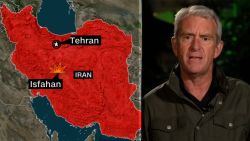The concentration of greenhouse gases in the atmosphere has once again reached record highs, according to a UN report published Monday, putting the planet on course for warming that far exceeds critical limits to stave off catastrophic climate change.
The concentration of carbon dioxide (CO2) in 2020 was 149% higher than levels before industrialization, hitting another annual record, according to the World Meteorological Organization’s (WMO) Greenhouse Gas Bulletin.
Although the Covid-19 pandemic caused a temporary decline in new emissions, it had no discernible impact on the amounts or impact of greenhouse gases already in the atmosphere, the report found. Instead, the gradual trend of increasing greenhouses gases that had been registered over the past decade has continued.
The findings add to a sense of urgency ahead of the COP26 climate talks, which begin in Glasgow, Scotland on Sunday on the heels of a G20 leaders meeting in Rome. There are expectations for some G20 nations that have not increased their ambitions since Paris to do so ahead of COP26.
China, the world’s biggest greenhouse gas emitter, on Sunday unveiled its climate road map without improving on its pledge to cut emissions.
“The Greenhouse Gas Bulletin contains a stark, scientific message for climate change negotiators at COP26. At the current rate of increase in greenhouse gas concentrations, we will see a temperature increase by the end of this century far in excess of the Paris Agreement targets of 1.5 to 2 degrees Celsius above pre-industrial levels,” said WMO Secretary General Petteri Taalas.
“We are way off track.”
The amount of CO2 in the atmosphere breached 400 parts per million in 2015 and has continued to rise rapidly.
“Carbon dioxide remains in the atmosphere for centuries and in the ocean for even longer. The last time the Earth experienced a comparable concentration of CO2 was 3-5 million years ago, when the temperature was 2-3°C warmer and sea level was 10-20 meters higher than now. But there weren’t 7.8 billion people then,” Taalas said.
Methane and nitrous oxide levels were also at record highs, at 262% and 123%, respectively, of levels in 1750, before the industrial revolution began a centuries-long process of human disruption of the Earth’s atmosphere.
“Greenhouse gas measurements are like skidding into a car crash. The disaster gets closer and closer but you can’t stop it,” Euan Nisbet, from the Greenhouse Gas Group at Royal University, told the Science Media Center.
Director of Edinburgh Climate Change Institute Dave Reay said the success or failure of COP26 would be “written in our skies in the form of greenhouse gas concentrations.”
“This new report from the WMO provides a brutally frank assessment of what’s been written there to date. So far, it’s an epic fail,” he said.
“The small window of opportunity to stabilize greenhouse gas concentrations at a level that meets the Paris Climate Goals is about to vanish.”
COP26 was initially billed as a once-in-a-generation chance to unite global efforts to fight climate change and commit the world to strong emissions pledges. But the conference has been shrouded in uncertainty in recent weeks, with several important leaders yet to confirm their attendance and as rising cases of Covid-19 in the United Kingdom raises questions around whether the event can go ahead at the scale planned.
Separately, a UN report synthesizing all countries’ pledges to reduce greenhouse gas emissions has found that the world is on course for a 16% increase in emissions by 2030, compared with 2010 levels.
Scientists have said that the world needs to halve its emissions over this decade to have any chance of containing global warming to 1.5 degrees Celsius.
In 2015, 192 parties signed onto the Paris Agreement and agreed to submit new pledges – known as Nationally Determined Contributions (NDCs) – ahead of COP26. So far, 143 parties have done so, and their pledges equate to a 9% reduction in emissions between 2010 and 2030.
But when all 192 parties are put together – including those who haven’t updated their NDCs, as well as those who updated them making the same or even a decreased pledge – greenhouse gas emissions are set to increase by 16%.
Among G20 countries that have not increased pledges ahead of COP26 are China, India, Australia, Brazil and Mexico.
“Comparison to the latest findings by the Intergovernmental Panel on Climate Change (IPCC) shows that such an increase, unless changed quickly, may lead to a temperature rise of about 2.7°C by the end of the century,” the UN report said.
CNN’s Angela Dewan contributed to this report.




















